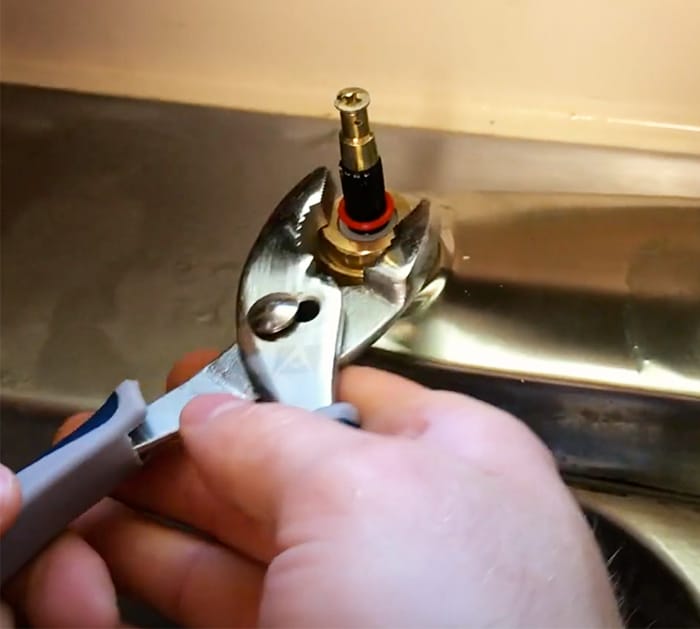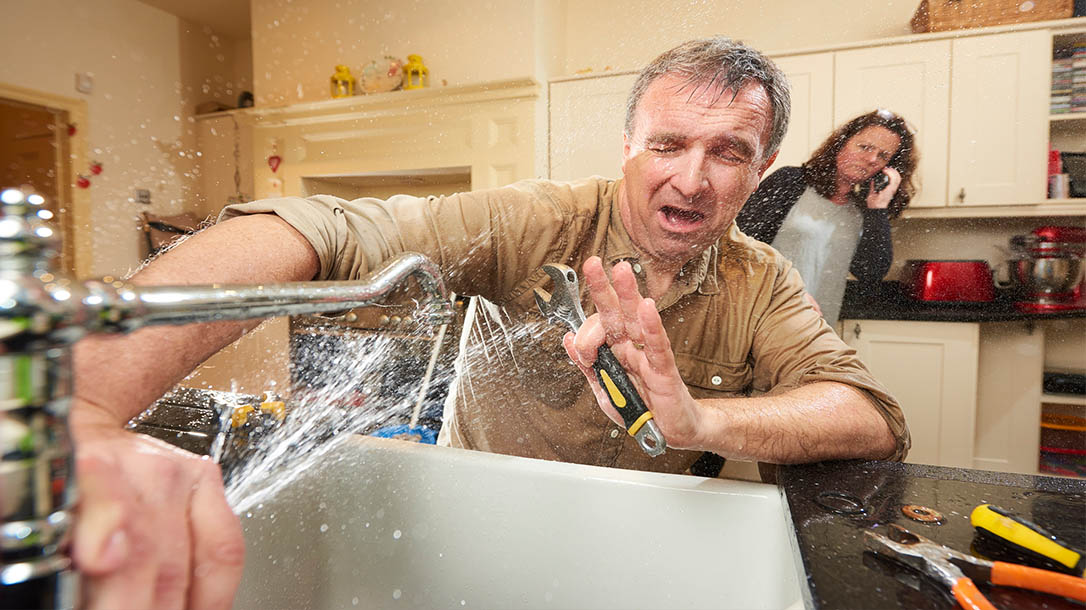My Reasons Behind Fixing a Leaking Faucet
My Reasons Behind Fixing a Leaking Faucet
Blog Article
The writer is making several good annotation regarding Water Dripping from Faucet: Why and How to Fix in general in this great article beneath.

Leaking faucets might feel like a minor inconvenience, yet their influence exceeds just the aggravation of the noise. From wasting water to sustaining unneeded financial prices and health and wellness dangers, ignoring a trickling faucet can bring about different effects. In this post, we'll delve into why it's vital to address this typical house problem without delay and efficiently.
Wastefulness of Water
Ecological Impact
Leaking taps contribute considerably to water waste. According to the Epa (EPA), a solitary faucet dripping at one drip per second can lose more than 3,000 gallons of water annually. This not only strains water resources however additionally affects communities and wildlife depending on them.
Step-by-Step Overview to Dealing With a Dripping Faucet
Devices Called for
Prior to trying to fix a leaking tap, gather the required tools, consisting of a flexible wrench, screwdrivers, replacement parts (such as washing machines or cartridges), and plumber's tape.
Typical Faucet Issues and Their Solutions
Recognize the kind of faucet and the details problem causing the drip. Usual problems consist of worn-out washing machines, corroded shutoff seats, or malfunctioning O-rings. Refer to maker guidelines or online tutorials for detailed guidance on repair services.
Financial Costs
Boosted Water Costs
Beyond the ecological influence, dripping faucets can blow up water bills substantially. The gathered waste gradually converts into higher utility costs, which might have been stayed clear of with prompt fixings.
Potential Home Damages
Additionally, extended dripping can lead to damage to components and surface areas bordering the faucet. Water build-up can cause discoloration, deterioration, and also structural issues if left unattended, causing extra fixing prices.
Health and wellness Concerns
Mold And Mildew and Mildew Growth
The consistent existence of moisture from a trickling faucet develops a suitable environment for mold and mildew and mildew development. These fungi not just compromise indoor air top quality however additionally present health dangers, specifically for individuals with breathing problems or allergic reactions.
Waterborne Conditions
Stagnant water in leaking taps can come to be a breeding place for microorganisms and other virus, boosting the risk of waterborne diseases. Contaminants such as Legionella bacteria prosper in stagnant water, potentially leading to severe ailments when ingested or breathed in.
DIY vs. Expert Fixing
Advantages and disadvantages of Do It Yourself Repair Service
While some might try to deal with a trickling tap themselves, do it yourself fixings feature their very own set of obstacles. Without correct understanding and devices, do it yourself efforts can worsen the concern or result in insufficient repairs, lengthening the trouble.
Benefits of Employing a Specialist Plumber
Hiring a professional plumber makes certain that the underlying source of the trickling faucet is dealt with successfully. Plumbers possess the knowledge and equipment to detect and fix tap problems efficiently, saving time and reducing the threat of additional damages.
Ecological Duty
Specific Contribution to Preservation
Taking obligation for taking care of trickling taps lines up with more comprehensive initiatives toward water conservation and ecological sustainability. Every individual's actions collectively make a considerable effect on preserving precious sources.
Sustainable Living Practices
By focusing on timely fixings and embracing water-saving routines, people add to lasting living techniques that benefit both present and future generations.
Preventive Measures
Regular Upkeep Tips
To avoid trickling faucets, perform regular maintenance such as cleansing aerators, checking for leaks, and replacing damaged parts without delay. In addition, consider mounting water-saving tools or upgrading to extra efficient components.
Significance of Prompt Services
Attending to leaking faucets as soon as they're seen stops further water waste and potential damage, inevitably saving both water and money in the long run.
Effect On Building Value
Assumption of Well-Maintained Residential Or Commercial Property
Preserving a property in good condition, including addressing maintenance problems like leaking faucets, improves its regarded value and worth among prospective buyers or tenants.
Impact on Resale Value
Qualities with well-maintained plumbing fixtures, including faucets, command greater resale values in the property market. Addressing trickling taps can add to a positive impression during residential property assessments and negotiations.
Final thought
Resolving a leaking tap goes beyond plain benefit; it's an essential action towards conserving water, decreasing economic expenses, and guarding health and residential property. Whether via do it yourself fixings or specialist support, taking action to fix leaking faucets is a little yet impactful method to promote accountable stewardship of resources and contribute to a healthier, more sustainable future.
How to Fix a Leaky Faucet: Step-by-Step Repair Guide
A leaky faucet may seem like a simple annoyance, but if it's not fixed promptly, that leak could cost hundreds to potentially thousands. From water damage to mold, mildew, and high water bills, even a tiny leak can be catastrophic if left unattended. Damage like this can even affect the overall value of your home, so it's important to take the right approach for leaky faucet repair. You may need the help of a plumber in some cases, but we've got a few tips you can try on how to fix a leaky faucet before calling the pros.
Four Faucet Types
When you're learning how to fix a leaky faucet, the first step is knowing what kind of faucet you're working with! There are four common types.
Cartridge Faucets
Cartridge faucets come in one- or two-handled varieties. In one-handled cartridge faucets, hot and cold water combines in a single cartridge. In the two-handled versions, hot and cold water are controlled separately and mixed in the faucet.
Ball Faucets
Ball faucets have a single lever you push up and down to adjust the pressure and rotate to change the temperature. A slotted metal ball controls the amount of water allowed into the spout.
Compression Washer Faucets
They're the oldest type of faucet, but they're still used in many homes — especially older ones. Compression faucets have two separate handles that, when turned, raise or lower the washer that seals a water valve. This valve stops water from flowing through the faucet when it is turned off.
Disc Faucets
Disc faucets rarely need to be repaired due to their maintenance-free design. The water flow is controlled by two discs — the upper one raises and lowers against a fixed lower disc, creating a watertight seal. If your disc faucet starts leaking, you may need to replace the seals or clean residue buildup from the inlets.
Fixing a Leaky Faucet
Step 1: Turn Off the Water
Whether you're learning how to fix a leaky bathtub faucet or how to fix a leaky kitchen faucet, always turn off the water supply to your working area when you're fixing a leak. The last thing you want is a flood added to your list of things to fix.
Look for the shutoff valves below your sink or around the tub and turn them clockwise to stop the water flow. If your faucet doesn't have shutoff valves, you may need to turn off the water for the whole house. Check to make sure it's off by turning the faucet on. If nothing comes out, you're ready to start the repair.
Step 2: Take Apart the Faucet
How you disassemble your faucet depends on the type of fixture you have. You can use a flathead screwdriver to remove the caps on top of the handle or handles for cartridge and compression faucets. Inside, you should see handle screws. Unscrew these with a screwdriver to remove the handle.
Disc- and ball-style faucets will typically have an inlet screw near the handle, and removing that will reveal the interior of the faucet.
Detach the Valve Stem
For cartridge- and compression-style faucets, you'll see the inner valve stem or cartridge once you remove the faucet handles. If you have a compression faucet, unscrew the brass valve stem. If you have a cartridge faucet, pull out the cartridge. If your cartridge has been in place for a while, it may require some tools or extra force to remove it due to mineral deposits.
Examine and Replace Parts
Once you've removed the parts, check them out to confirm what needs to be replaced. You may see corroded rubber washers, O-rings, stems, or cartridges. On a ball-style faucet, check the seats and springs for damage.
If you need to repair a leaky disc faucet, check the inlet and seals on the lower disc.
Once you determine what parts must be replaced, visit your local hardware store. Bring the damaged parts with you to ensure you can purchase the correct components to replace them.
Clean Valves and Faucet Cavity
If you've removed a stem or cartridge, you may notice mineral buildup in the faucet's threads. Use white vinegar to clean the valve seat by soaking it for a few minutes, then scrub it away with a soft toothbrush and rinse with warm water. You can also clean the interior of the faucet in the same way.
Reassemble the Faucet
Once your faucet is cleaned and the required parts have been replaced, it's time to reassemble it. Put the pieces back together and slowly turn the water supply back on. Doing this slowly is crucial because too much initial water pressure can damage the new hardware you've just installed.
https://homewarranty.firstam.com/blog/how-to-fix-leaky-faucet

We were shown that article on How to Fix a Dripping or Leaky Faucet through an acquaintance on a different web page. Are you aware of another person who is sincerely interested in the subject? Why not share it. Thanks so much for taking the time to read it.
Report this page